 |
||
| 1 May 2024 | ||
|
- Urgent Reforms Needed in the Poultry Industry
- Immunization Programme
- Exploring Patachitra Painting
- The Street Vendors (Protection of Livelihood and Regulation of Street Vending) Act, 2014: A Decade On
- Unveiling Peucetia chhaparajnirvin: A New Discovery in Arachnology
- Honoring Environmental Leadership: The Goldman Environmental Prize
- Fostering Action on Antimicrobial Resistance: The Global Leaders Group
- Tragedy Strikes the Great Rift Valley
- Discovering the Taam Ja Blue Hole
- Reforming the Indian Arbitration System
Urgent Reforms Needed in the Poultry Industry
Context;
- The recent outbreak of H5N1 underscores the necessity for immediate reforms in the poultry industry.
- Experts have long warned about the unsafe conditions prevalent in industrial livestock production, making this disaster foreseeable.
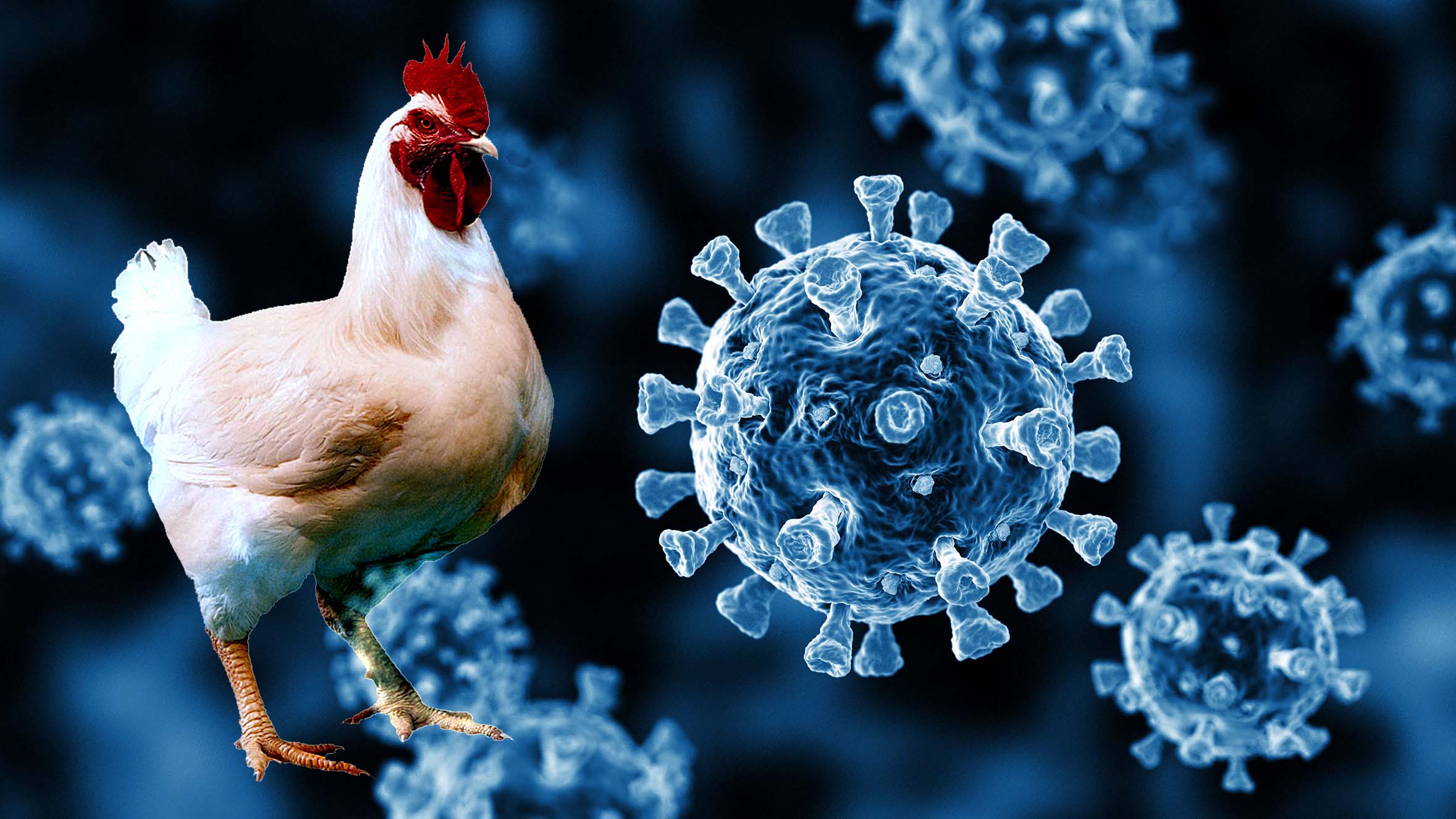
Global Spread of H5N1:
- The H5N1 virus has spread globally, impacting various species, including humans and wildlife in both the Arctic and Antarctica.
- In India, the first H5N1 case emerged in Maharashtra in 2006, with subsequent outbreaks affecting 15 states by December 2020 and early 2021.
- The fatality rate among infected humans stands at a significant 52%, emphasizing the urgent need for robust biosecurity measures
Factors Contributing to H5N1 Spread:
- Direct Contact with Infected Birds: Human infections primarily occur through direct contact with infected birds or contaminated environments.
- Poultry Trade and Movement: Transportation and trade of infected poultry, along with crowded live poultry markets, facilitate the spread of the virus.
- Antibiotic Resistance: Misuse of antibiotics in poultry farming, highlighted by the 269th Law Commission of India Report in 2017, contributes to antibiotic resistance.
- Environmental Factors: Proximity to bodies of water, reduced rainfall, and presence near major highways increase the risk of H5N1 outbreaks.
Regulatory Oversight:
The Central Pollution Control Board (CPCB) has classified poultry units with over 5,000 birds as highly polluting ‘orange category’ industries, necessitating compliance with environmental regulations.
Proposed Solutions:
- Draft Rules for Welfare: The Law Commission’s recommendations include draft rules aligning with international standards for animal welfare, waste management, and antibiotic use.
- Weaknesses in Draft Rules: Criticism has been directed at the perceived weaknesses of the 2019 draft rules released by the Ministry of Agriculture and Farmers’ Welfare, which fail to meet the Law Commission’s recommendations.
- Need for Oversight and Enforcement: Given the industry’s classification as highly polluting, strict oversight and enforcement of environmental regulations are imperative to mitigate further risks.
Immunization Programme
Introduction;
- The Essential Programme on Immunization, formerly known as the Expanded Programme on Immunization (EPI), was initiated by the World Health Organization (WHO) in 1974.
- This year marks its 50th anniversary since its inception.
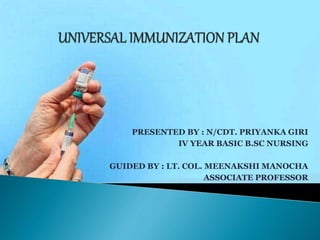
About the Essential Programme on Immunization:
- Initially launched as the Expanded Programme on Immunization (EPI) in 1974, its primary aim was to ensure universal access to life-saving vaccines for all children worldwide.
- Over time, it has transformed into the Essential Programme on Immunization.
Diseases Covered (Total 13):
- Initially, the focus of the programme was on safeguarding against six vaccine-preventable childhood diseases: Bacillus Calmette-Guérin (BCG), diphtheria, pertussis, tetanus, polio, and measles.
- Subsequently, the WHO expanded its scope to include seven additional diseases: Haemophilus influenzae type B (Hib), Hepatitis B (HepB), rubella, pneumococcal disease (PNC), rotavirus (Rota), human papillomavirus (HPV), and COVID-19 for adults.
India’s Universal Immunization Programme (UIP):
India initiated the EPI in 1978, later renamed the Universal Immunization Programme (UIP) in 1985, with the following objectives:
- Rapidly increase immunization coverage.
- Improve service quality.
- Establish a reliable cold chain system up to the health facility level.
- Monitor performance.
- Achieve self-sufficiency in vaccine production.
Eligibility:
All beneficiaries, including pregnant women and children, are eligible for vaccination at government or private health facilities or designated immunization session sites (such as Anganwadi centers) on scheduled days. The UIP ensures equal access to high-quality vaccines for all sections of society.
Under the UIP, immunization is provided free of cost against 12 vaccine-preventable diseases:
- Nationally: Diphtheria, Pertussis, Tetanus, Polio, Measles, Rubella, severe Childhood Tuberculosis, Hepatitis B, and Meningitis & Pneumonia caused by Haemophilus Influenza type B.
- Sub-nationally: Rotavirus diarrhoea, Pneumococcal Pneumonia, and Japanese Encephalitis; with the Rotavirus and Pneumococcal Conjugate vaccines in the process of expansion, while JE vaccine is administered only in endemic districts.
Exploring Patachitra Painting
Overview:
In the village of Naya, West Bengal, pioneering women artists are taking Patachitra painting to new heights by selling their creations online, garnering international recognition and inspiring future generations to carry on this traditional craft.

Understanding Patachitra Painting:
- Patachitra, or Pattachitra, is a form of traditional scroll painting originating from the eastern Indian states of Odisha and West Bengal.
- Its roots date back to the 12th century, with “Patta” meaning “cloth” and “Chitra” translating to “picture” in Sanskrit.
- These paintings are revered for their intricate detailing and often depict mythological narratives and folktales, predominantly focusing on Hindu deities.
- Initially serving ritualistic purposes, Patachitras also served as souvenirs for pilgrims visiting temples in Odisha and were utilized as visual aids during traditional Bengali song performances.
Creation Process:
- Crafting Patachitra paintings involves a unique process.
- Special canvases are made by layering cotton sarees with tamarind paste and clay powder.
- While traditional materials included cotton canvas, contemporary artists now employ both cotton and silk canvases.
- The painting process begins directly on the canvas without preliminary sketches.
- Artists typically start by completing the borders before filling in colors. Natural sources such as lamp soot and powdered conch shells provide the pigments.
- Given the meticulous detailing, each painting may require weeks or months to finish.
The Street Vendors (Protection of Livelihood and Regulation of Street Vending) Act, 2014: A Decade On
Overview:
As of May 1, 2014, the Street Vendors (Protection of Livelihood and Regulation of Street Vending) Act has been in effect for a decade, marking a significant milestone in the regulation of street vending activities.

Understanding the Act:
- The Act was enacted to formalize the rights of street vendors (SVs) and to establish a legal framework for the regulation and protection of street vending in urban areas.
- It delegated the responsibility for implementation to Urban Local Bodies (ULBs), with provisions for state-level rules and schemes.
- The Act also clearly defined the roles and responsibilities of both vendors and government entities involved in its execution.
Key Provisions:
- Accommodation of Existing Vendors: The Act emphasizes the inclusion of all ‘existing’ vendors within designated vending zones and the issuance of vending certificates (VCs) to eligible vendors.
- Participatory Governance: Town Vending Committees (TVCs) were established to ensure the participation of vendors in decision-making processes. Vendor representatives make up 40% of TVC memberships, with a sub-representation of at least 33% for women SVs.
- Grievance Redressal Mechanism: The Act proposes the formation of Grievance Redressal Committees, chaired by civil judges or judicial magistrates, to address grievances and disputes related to street vending.
- Periodic Surveys: States and ULBs are mandated to conduct surveys at least once every five years to identify street vendors and assess their needs.
Unveiling Peucetia chhaparajnirvin: A New Discovery in Arachnology
Overview:
- Recently, an arachnologist based in Daryapur uncovered a remarkable find in the world of arachnids: the green lynx spider, Peucetia chhaparajnirvin.
- This newfound species has captivated the interest of researchers and enthusiasts alike with its unique characteristics.
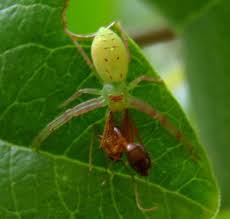
Understanding Peucetia chhaparajnirvin:
- Peucetia chhaparajnirvin emerges as a distinct species of green lynx spider, previously unknown to science.
- Its presence was revealed within the confines of the Tal Chhapar Wildlife Sanctuary in Rajasthan’s Churu district.
- The spider derives its name, “Peucetia chhaparajnirvin,” from its discovery site, Tal Chhapar.
- Notably, it inhabits the lush leaves of the Vachellia nilotica (babul) tree, utilizing its vibrant green coloration for camouflage while ambushing prey with its agile movements.
- Primarily nocturnal, this spider sustains itself by preying upon small insects.
Exploring Lynx Spiders:
- Lynx spiders, members of the Oxyopidae family, distinguish themselves as active hunters devoid of web-building behaviors.
- Instead, they rely on ambush tactics to capture prey swiftly.
- Commonly found amidst low shrubs and herbaceous vegetation, these spiders serve as crucial predators of insects.
- Characterized by hexagonally arranged eyes and tapered abdomens, Lynx spiders often exhibit striking color patterns on their abdomens and possess spiky legs, enhancing their visual allure.
Honoring Environmental Leadership: The Goldman Environmental Prize
Overview:
- In a momentous achievement, Alok Shukla, the convener of the Chhattisgarh Bachao Andolan and a founding member of the Hasdeo Aranya Bachao Sangharsh Samiti, has been bestowed with the prestigious 2024 Goldman Prize for Asia.
- This accolade recognizes his unwavering commitment to environmental conservation, often in the face of personal risks.
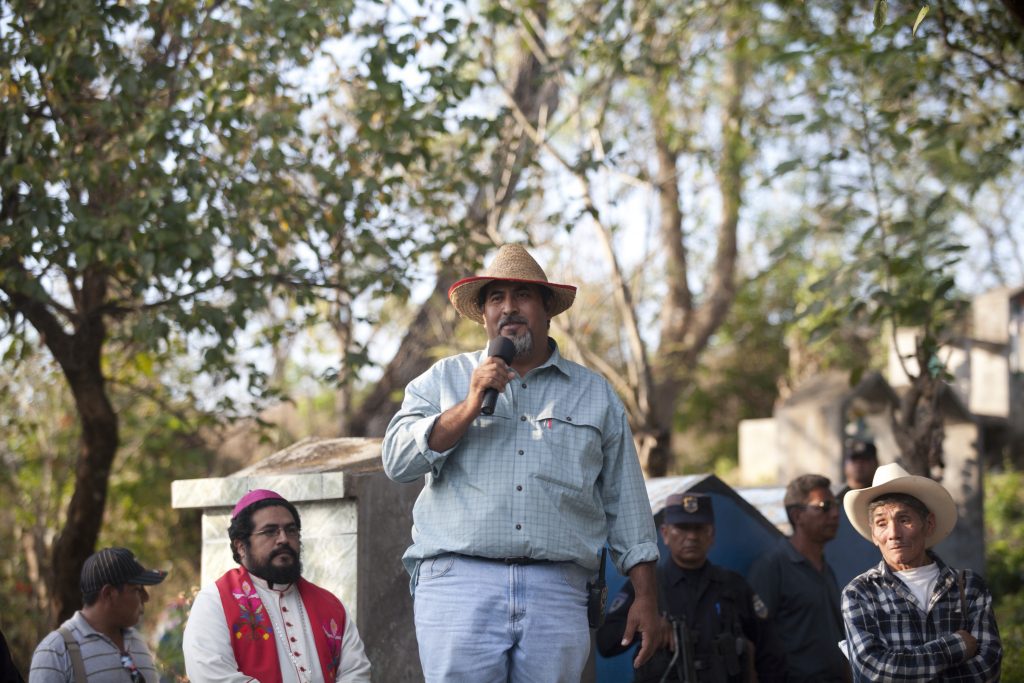
Exploring the Goldman Environmental Prize:
- The Goldman Environmental Prize serves as a beacon of recognition for individuals who demonstrate sustained and impactful efforts in safeguarding and enriching the natural environment.
- Reverently dubbed the “Green Nobel,” this prize celebrates grassroots environmental champions across six major geographical regions.
- It emphasizes the importance of local initiatives and community involvement in driving positive environmental change.
- The inaugural ceremony of the Goldman Environmental Prize took place on April 16, 1990, coinciding with Earth Day.
The Hasdeo Aranya Region: A Treasure of Biodiversity:
- Situated in the northern expanse of Chhattisgarh, the Hasdeo Aranya region is renowned for its abundant biodiversity and significant coal reserves.
- Encompassing Korba, Surajpur, and Sarguja districts, this area is home to a substantial tribal population.
- The majestic Hasdeo River, a tributary of the Mahanadi, meanders through its lush terrain.
- Notably, the region boasts the largest unfragmented forests in Central India, characterized by pristine Sal and teak woodlands, symbolizing its ecological richness.
Fostering Action on Antimicrobial Resistance: The Global Leaders Group
Overview:
Recently, in Barcelona, Spain, the European Society for Clinical Microbiology and Infectious Diseases (ESCMID) and the Global Leaders Group (GLG) on Antimicrobial Resistance (AMR) co-organized a significant event titled ‘Forging Partnerships between Science and Policy’.
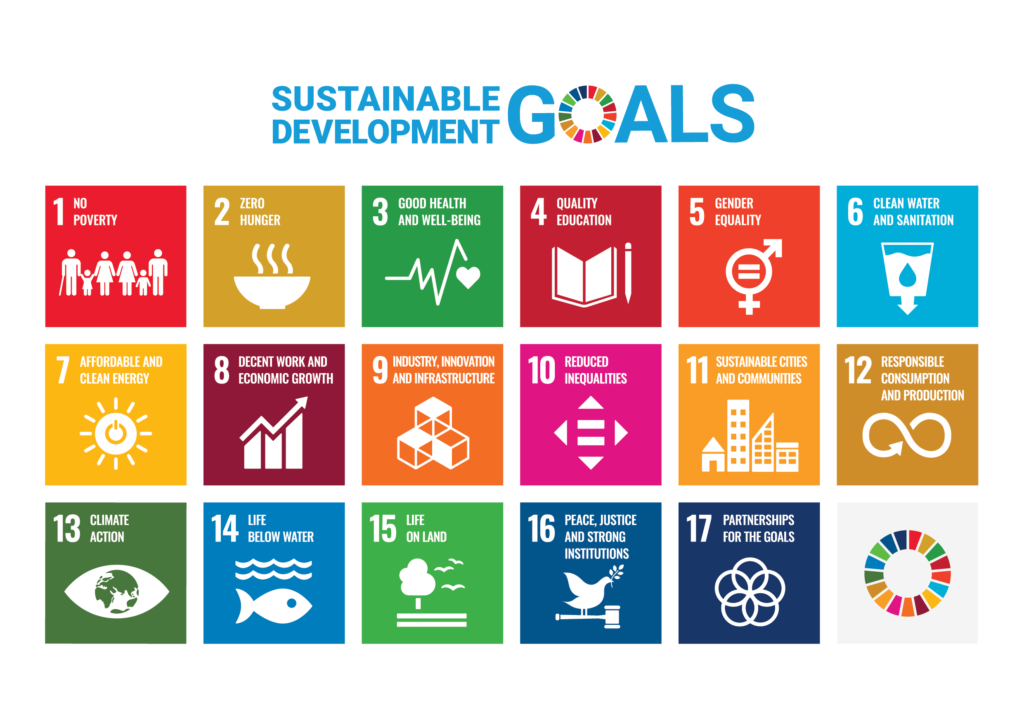
Understanding the Global Leaders Group on Antimicrobial Resistance:
- Comprised of esteemed leaders and experts from various sectors, the Global Leaders Group on AMR is committed to accelerating political action against antimicrobial resistance.
- As an independent advisory and advocacy body, it aims to sustain urgency and visibility on the global health agenda regarding AMR.
Background:
- The Global Leaders Group on AMR was established in November 2020 based on a recommendation from the Interagency Coordination Group (IACG) on Antimicrobial Resistance.
- Its inaugural meeting convened in January 2021, marking a pivotal step towards addressing AMR at a global level.
Secretariat Support:
The Quadripartite Joint Secretariat (QJS) on Antimicrobial Resistance, comprising the Food and Agriculture Organization of the United Nations (FAO), the United Nations Environment Programme (UNEP), and the World Organisation for Animal Health (OIE), provides essential support to the Group.
Understanding Antimicrobial Resistance (AMR):
- AMR refers to the ability of bacteria and other microbes to withstand drugs intended to eradicate them.
- This phenomenon, termed ‘superbugs,’ poses a significant threat by causing drug-resistant infections that are challenging to treat.
Causes of AMR:
- While AMR occurs naturally, widespread antimicrobial drug usage is the primary driver.
- The increased use of these drugs in humans, animals, and plants has led to a concerning rise in drug resistance, complicating the treatment of infections.
Tragedy Strikes the Great Rift Valley
Context;
- A devastating catastrophe unfolded in Kenya’s Rift Valley, claiming the lives of at least 42 individuals as torrential rains and floods caused a dam breach.
- This tragic incident sheds light on the region’s susceptibility to natural disasters during periods of extreme weather.
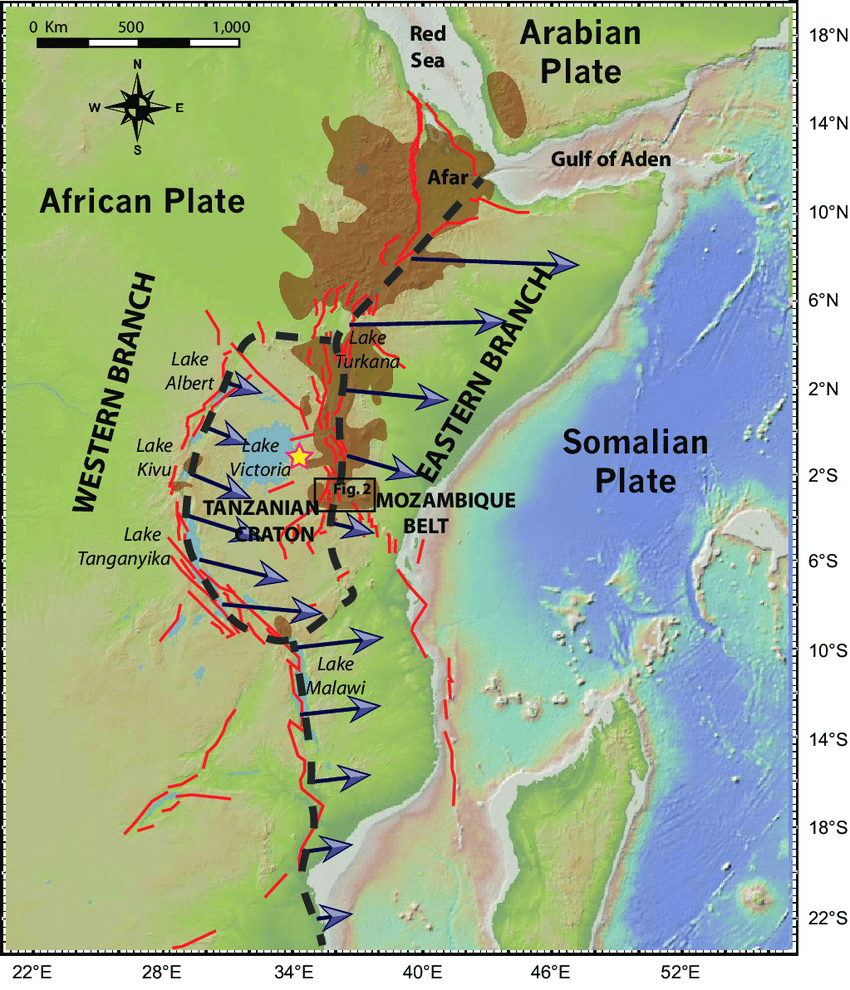
Exploring the Great Rift Valley:
- The Great Rift Valley stands as a monumental geological feature, stretching across East Africa for approximately 4,000 miles (6,400 kilometers) from Jordan to Mozambique’s coast.
- Spanning multiple countries, it forms a crucial part of the East African Rift System (EARS), showcasing remarkable geological diversity and seismic activity.
Formation and Features:
- Dating back some 40 million years, the valley’s formation resulted from the convergence of three tectonic plates, creating a rift characterized by steep cliffs rising up to 3,000 feet (900 meters) above the valley floor.
- With an average width of 30 to 40 miles (48 to 64 kilometers), the valley widens to nearly 300 miles (480 kilometers) in some areas, notably within the Danakil Desert.
- Its dynamic geology boasts volcanoes, hot springs, and frequent earthquakes, while a series of lakes, including Lake Tanganyika and Lake Victoria, adorn its length.
Significance and Ecological Importance:
- Beyond its geological allure, the Great Rift Valley holds immense ecological significance, housing Africa’s highest peaks and supporting rich biodiversity.
- Mountains like Kilimanjaro, Kenya, and Margherita stand as guardians to the valley, contributing to its ecological wealth.
Understanding Rift Valleys:
- Rift valleys, such as the Great Rift Valley, are formed by the separation of Earth’s tectonic plates—a process known as rifting.
- Distinguished from valleys shaped by erosion, rift valleys emerge from tectonic activity and are found both on land and beneath the ocean’s surface, where seafloor spreading occurs.
Discovering the Taam Ja Blue Hole
Understanding Blue Holes:
Blue holes are fascinating underwater formations resembling sinkholes or vertical caves, often found in coastal regions with low-lying karst platforms. They form gradually over time as limestone or carbonate rock is dissolved by slightly acidic groundwater.
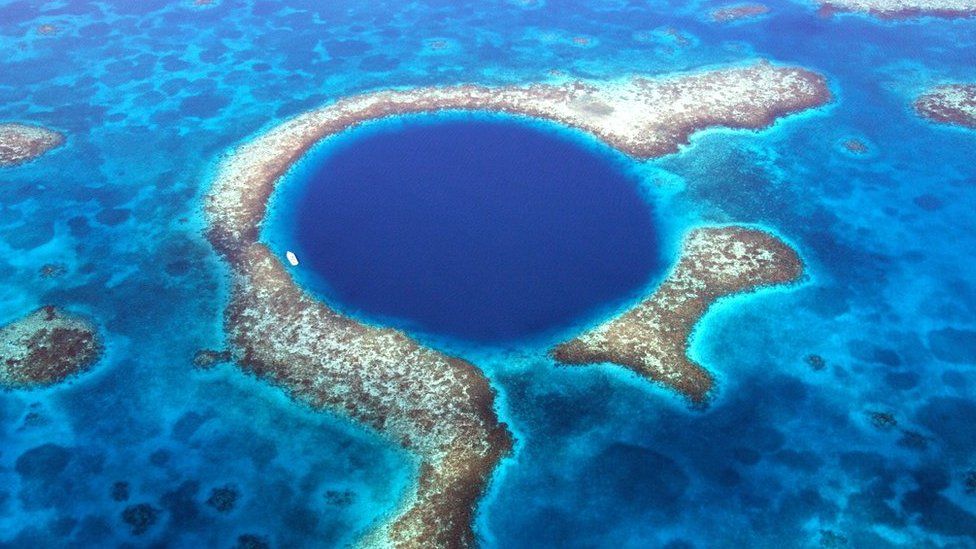
Features of the Taam Ja Blue Hole:
- The Taam Ja Blue Hole, boasting a depth of approximately 900 feet, ranks as the second-deepest blue hole globally.
- Its surface presents a nearly circular shape, surrounded by steep walls that create a striking conical structure adorned with biofilms, sediments, and limestone and gypsum ledges.
- Situated in the central region of Chetumal Bay, it aligns with a series of submerged coastal karstic sinkholes known locally as ‘pozas’.
- Along its walls, discontinuous terraces give way to steep, almost vertical slopes, offering a captivating underwater landscape.
- Notably, the blue hole exhibits fluctuations in salinity and temperature, adding to its allure.
Insights into the Yucatan Peninsula:
- The Yucatan Peninsula, extending northeast from Central America, lies between the Gulf of Mexico to the west and north, and the Caribbean Sea to the east.
- Comprising mainly coralline and porous limestone rocks, this region is characterized by unique geological formations, including sinkholes and caves.
Understanding Sinkholes:
- Sinkholes can form through natural processes or human activities, particularly prevalent in karst terrains where soluble rocks like limestone and dolomite are susceptible to dissolution by groundwater.
- Karst terrains, distinguished by distinctive landforms such as caves, sinkholes, and springs, result from this dissolution process.
- Human-induced factors, such as broken land drains and increased rainfall, can also contribute to sinkhole formation.
Reforming the Indian Arbitration System
Context:
Vice President Jagdeep Dhankhar emphasized the necessity of reforming the Indian arbitration system to enhance its effectiveness and efficiency.

Understanding Alternative Dispute Resolution (ADR):
- Alternative Dispute Resolution (ADR) encompasses various methods of resolving disputes outside the traditional court system.
- It involves parties seeking to resolve their conflicts privately with the assistance of a neutral third party.
- The decisions reached through ADR are binding, akin to court judgments.
Types of ADR Processes:
1. Arbitration:
Arbitration is a quasi-judicial process where parties mutually agree on the rules and appoint an arbitrator to adjudicate the dispute. The arbitrator’s decision, known as an “Award,” holds the same legal weight as a court order.
2. Mediation:
Mediation involves a neutral mediator assisting parties in reaching a mutually acceptable resolution. The mediator facilitates communication and negotiation but does not impose a decision.
3. Negotiation:
Negotiation involves direct discussions between parties to resolve their differences without third-party intervention.
4. Conciliation:
Conciliation entails the involvement of a neutral conciliator who assists parties in reaching a settlement agreement.
Challenges in the Arbitration System:
The Indian arbitration system faces several challenges, including complexity, perception as an additional layer to traditional litigation, lack of trust, and inefficiency.
Arbitration and Conciliation Act, 1996:
- The Arbitration and Conciliation Act, 1996, provides the legal framework for arbitration in India.
- It covers international commercial arbitration, domestic arbitration, and the enforcement of foreign arbitral awards.
- The Act, aligned with the UN model law, aims to harmonize with international arbitration standards.
- It has undergone several amendments in 2015, 2019, and 2021 to address evolving needs and enhance its effectiveness.

